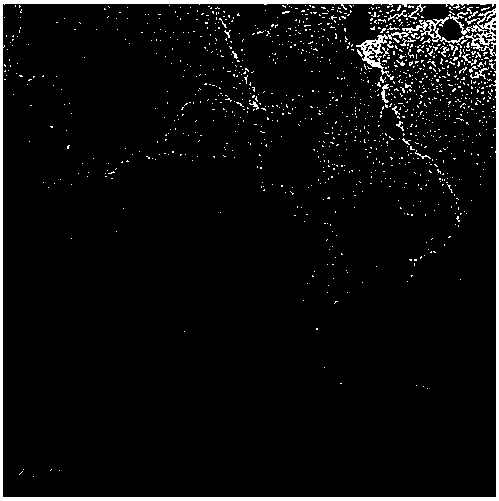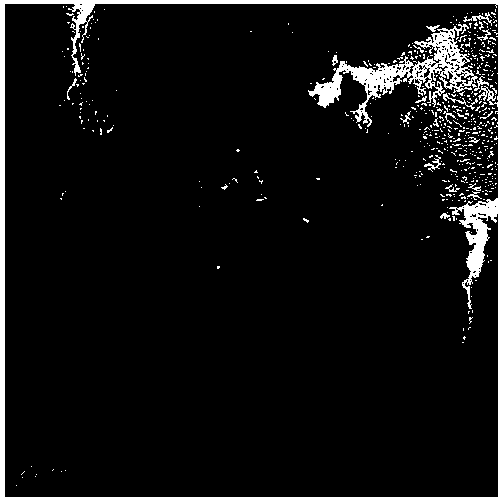Preparation method of tin oxide-bacterial cellulose composite supported palladium-based fuel cell catalyst
A technology of bacterial cellulose and bacterial cellulose membrane, which is applied in the field of preparation of tin oxide-bacterial cellulose composite supported palladium-based fuel cell catalysts, can solve the problems of catalyst CO poisoning activity and reduction, and achieve improved dispersion and preparation process The effect of stability and easy access to raw materials
- Summary
- Abstract
- Description
- Claims
- Application Information
AI Technical Summary
Problems solved by technology
Method used
Image
Examples
Embodiment 1
[0025] (1) Add the lumpy bacterial cellulose membrane to a 0.3% sodium hydroxide solution by mass percentage and boil it in a water bath at 358K for 5 hours. After the water bath treatment is completed, rinse repeatedly with a large amount of deionized water until the pH value is neutral. Then put the bacterial cellulose membrane into NaOH / urea / H with a mass percentage of 7:12:81 2 In the O mixed solution (pre-cooled to -12 ℃), stir vigorously until all the lumps of bacterial cellulose are dissolved, and a transparent bacterial cellulose solution is obtained;
[0026] (2) SnCl 4 ·5H 2 O and the bacterial cellulose treated in step (1) were mixed with a mass ratio of 1:5 for 0.5 hours and fully dispersed by ultrasonic, and then magnetic stirring was continued for 8 hours, and then 2 mol / L HCl solution was added dropwise to make the pH value neutral. Finally, the solid powder is obtained by ethanol centrifugal washing and freeze drying;
Embodiment 2
[0033] (1) Add the lumpy bacterial cellulose membrane to 1.0% sodium hydroxide solution by mass percentage, and treat it in a water bath at 358 K for 4 hours. After the water bath treatment is completed, rinse repeatedly with a large amount of deionized water until the pH value is neutral. Then put the bacterial cellulose membrane into NaOH / urea / H with a mass percentage of 7:12:81 2 In the O mixed solution (pre-cooled to -12 ℃), stir vigorously until all the lumps of bacterial cellulose are dissolved, and a transparent bacterial cellulose solution is obtained;
[0034] (2) SnCl 4 ·5H 2 O and step (1) treated bacterial cellulose at a mass ratio of 5:1 to mix and ultrasonic for 1 hour to fully disperse, then continue magnetic stirring for 6 hours, and then add 2 mol / L HCl solution dropwise to make the pH neutral. Finally, the solid powder is obtained by centrifugal washing and freeze drying with deionized water;
[0035] (3) Place the solid powder obtained in step (2) in a tube furn...
Embodiment 3
[0040] (1) Add the lumpy bacterial cellulose membrane to 2.5% sodium hydroxide solution by mass percentage, and treat it in a water bath at 358 K for 2 hours. After the water bath treatment is completed, rinse repeatedly with a large amount of deionized water until the pH value is neutral. Then put the bacterial cellulose membrane into NaOH / urea / H with a mass percentage of 7:12:81 2 In the O mixed solution (pre-cooled to -12 ℃), stir vigorously until all the lumps of bacterial cellulose are dissolved, and a transparent bacterial cellulose solution is obtained;
[0041] (2) SnCl 4 ·5H 2 O and the bacterial cellulose treated in step (1) were mixed with a mass ratio of 2:3 and sonicated for 3 hours to fully disperse, and then magnetic stirring was continued for 4 hours, and then 2 mol / L HCl solution was added dropwise to make the pH neutral. Finally, the solid powder is obtained by centrifugal washing and freeze drying with deionized water;
[0042] (3) Place the solid powder obtaine...
PUM
| Property | Measurement | Unit |
|---|---|---|
| particle size | aaaaa | aaaaa |
| particle size | aaaaa | aaaaa |
Abstract
Description
Claims
Application Information
 Login to View More
Login to View More - R&D
- Intellectual Property
- Life Sciences
- Materials
- Tech Scout
- Unparalleled Data Quality
- Higher Quality Content
- 60% Fewer Hallucinations
Browse by: Latest US Patents, China's latest patents, Technical Efficacy Thesaurus, Application Domain, Technology Topic, Popular Technical Reports.
© 2025 PatSnap. All rights reserved.Legal|Privacy policy|Modern Slavery Act Transparency Statement|Sitemap|About US| Contact US: help@patsnap.com


